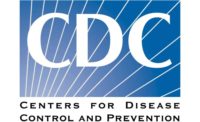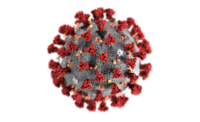Only four of the five latest confirmed 2019 novel coronavirus infections in the U.S. are people with a travel history to Wuhan, China, the epicenter of the outbreak, according to the CDC’s National Center for Respiratory Diseases. Its director, Dr. Nancy Messonnier, said at a press briefing yesterday that the fifth patient – who is in California - is a close household contact of another patient in California. This is the second instance of person-to-person spread in the United States.
The new cases bring the total of coronavirus cases in the U.S. to 11, and Messonnier said there will likely be more.
“We expect to see more cases of person-to-person spread among close contacts. And we continue to expect this will happen given the explosive nature of this outbreak in China and our very aggressive public health response where we are putting a lot of resources into finding infections this virus.”
Those resources include a test developed by the CDC that can detect the virus clinical specimens.
As of yesterday, there were 167 persons under investigation (PUIs) who have tested negative for infection with the novel virus. Tests are currently pending on 82 PUIs.
Messonnier said the CDC has isolated the virus, and this week it is being sent to the NIH resource repository for use by the broad scientific community. The agency also plans to submit an Emergency Use Authorization or EUA package to FDA, The EUA process expedites the use of potentially life-saving medical or diagnostic products during a public health emergency. Once approved, the EUA will allow public health labs across the United States to use the CDC developed diagnostic assay.
“This will greatly enhance our national capacity to test for this virus,” said Messonnier. “In preparation for that approval, CDC has shipped the test to the International Reagent Resource so that States and international partners can begin ordering the test for their use.”
An initial negative result, though, does not guarantee that a PUI won’t get sick, according to Messonnier, who said that although the test is accurate, a negative result may mean that an infection has not developed enough to be detected by the test. “This is a new virus. And the best timing and right type of sample to determine if someone is infected with this new virus has not yet been determined.”
Due to the intensity of transmission in Hubei province; the expansion to other provinces in China; the continued community transmission; the growing volume of exported cases to countries around the world; the continued reporting of deaths, including the first death outside of China; and reports of person to person spread outside China, the federal government last week took took unprecedented steps in the area of travel.
President Trump issued a proclamation that that suspends entry of foreign nationals who have visited China within the past 14 days into the United States. There are some exemptions including for immediate family members of U.S. citizens and legal permanent residents. People coming from Hong Kong and Macau are excluded.
People who are allowed entry into the U.S. who are entering the country within 14 days of having been in Hubei province or the rest of mainland China will be directed to one of 11 U.S. airports. At those airports, American citizens and exempted persons who have been in Hubei province in the previous 14 days will have an additional health assessment, including being screened for fever, cough, difficulty breathing.
“If symptomatic, American citizens and those who are exempt will be transferred for further medical evaluation,” said. “They will not be able to complete their itinerary and will be isolated for 14 days. If asymptomatic, American citizens and those who are exempt will be subject to a mandatory 14-day quarantine at or near that location. Remember, this is specifically for people who are returning from Hubei province. These people will not be able to complete their itinerary. CDC is working with state to determine where travelers will be quarantined. American citizens and people who are exempt who have been in other parts of mainland China, that is outside of Hubei province, in the previous 14 days will have an additional health assessment where they will be screened for fever, cough, or difficulty breathing. If symptomatic, they will be transferred for medical evaluation and they will not be able to complete their itinerary until that evaluation is completed. If asymptomatic, American citizens and people who are exempt will be allowed to reach their final destination, and after arrival will be asked to stay home as much as possible and monitor their health for 14 days.”
Messonier said there are likely to be confirmed infections among returning travelers.
“It’s important to know that this strategy is not meant to catch every single traveler returning from China with novel coronavirus. Given the nature of this virus and how it’s spreading, that would be impossible. But working together we can catch the majority of them, and the goal here is to slow the entry of this virus into the United States.
“Our second line of defense in this strategy is a public health system which is on high alert. We’ll continue to monitor the situation and adjust accordingly. Either pulling back or strengthening these measures. These actions are science based and deemed at protecting the health and safety of all Americans.”






